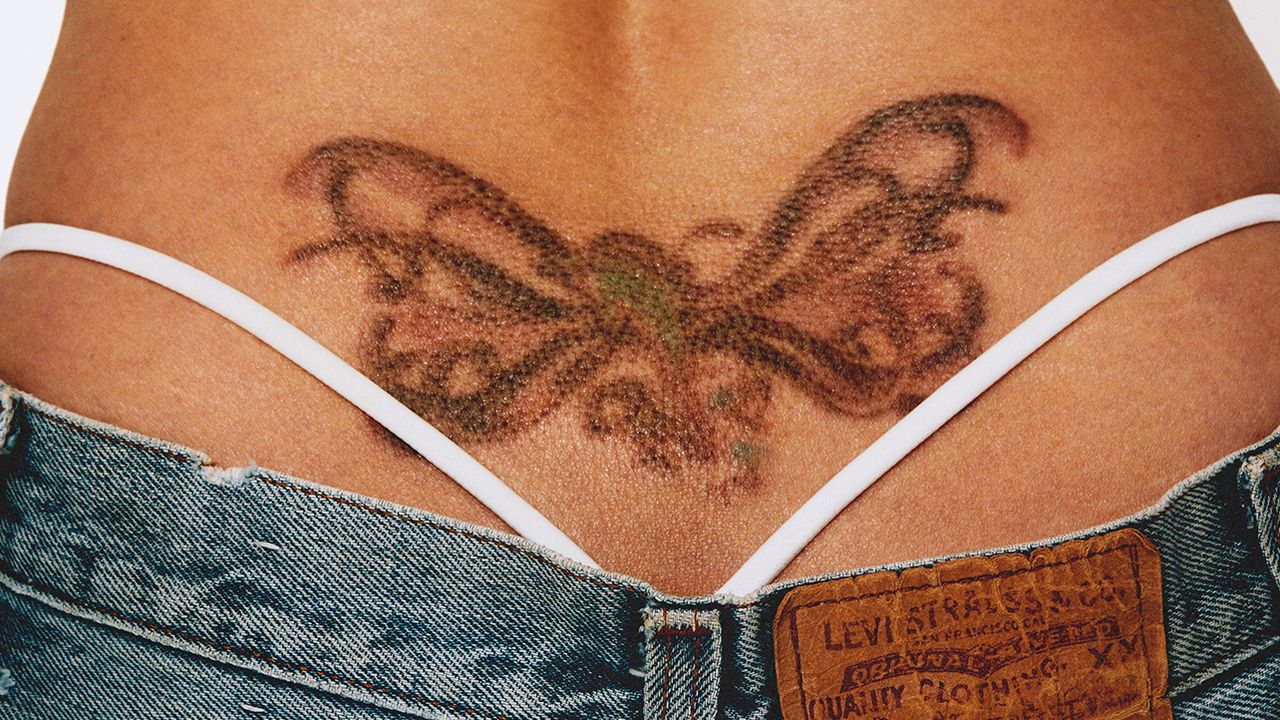What’s really happening under the laser during tattoo removal is much more complex and elegant than it literally sounds (and smells). These days, the best-in-class lasers for the procedure are five-to-six-figure picosecond laser machines, named for the duration of time it takes to heat the ink in your skin—picoseconds, or trillionths of a second. In that time, the laser targets the pigment in the ink, heating it to a temperature it cannot sustain. (If you point a calibrated picosecond laser at a patch of ink-free skin, there is no pigment to attach to and it will do absolutely nothing.) That blood-curdling popping is the sound of the larger ink particles, initially designed to remain in the body forever, shattering into tinier particles. Once they are tiny enough, the ink becomes accessible to the body’s immune processes.
In the months following one of these laser sessions, a healthy person’s system will absorb some of these much smaller ink particles and flush them away, the way it would a minor virus or a small bruise. The sensitive lasered skin might sting for a few days, and then possibly get itchy, and laser technicians strongly advise their clients to stay out of the sun in the weeks after a treatment. But then, the tattoo, like the memory of the laser experience, begins to fade, slowly. A couple of months later, it’s time to repeat the process all over again. With a little bit of luck and dedication, for a healthy person most tattoos will be gone within one to two years, at which point the formerly tattooed can simply enjoy their revirginized skin—or they can start getting it tattooed again.
There is some poetic justice to the idea that reversing what was intended to be a permanent choice requires such agony and commitment. “We are literally defying the laws of gravity by getting a tattoo and having it be permanent on our skin, when our body just wants it all out,” Rebecca, a laser technician from Inkless, tells me. “We are also defying the laws when we’re removing it.”
About a third of American adults have tattoos—that’s at least 80 million people. And a quarter of those 80 million are thought to regret their body art, totaling some 20-odd-million prospective tattoo-removal clients. All of those millennials who started getting inked in their 20s, just as tattoos were evolving from something transgressive into something more commonplace? They’re now inching toward or into their 40s and feeling disconnected from their misspent youths. They’re having babies, paying mortgages, sobering up, getting colonoscopies, and eating clean. They want their bodies to reflect those dramatic existential shifts.
At the same time, lasers have become more advanced, and more accessible. In the early days of tattoo removal, the lasers were cruder, and more painful, and in many states you had to see a doctor for a treatment. Nowadays, treatments are less abrasive, much cheaper (anywhere from hundreds to several thousands of dollars, depending on the size and complexity of the tattoo), and easier on the skin. Even the financial sector is betting on the future of tattoo removal: In 2021, the laser chain Removery received a $50 million investment from a private equity firm. There are now over 150 Removery locations worldwide, part of a shift that has helped evolve the practice of tattoo removal from an obscure and brutal procedure to something as unexceptional as biannual dental cleanings or quarterly Botox injections. Amid this boom, tattoos themselves are on the brink of an identity crisis, shedding their permanence and entering into the realm of fashion ephemera, like the width of pants or the shape of eyebrows.


